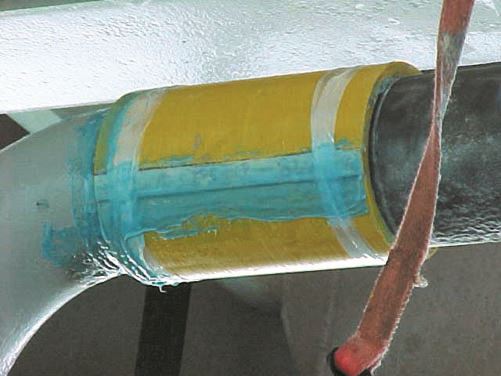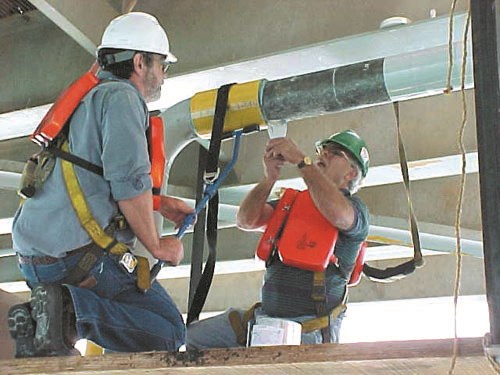Pre-Cured Sleeves For High-Pressure Pipes
Clock Spring is one of several composite wrap approaches developed by inventor Norman C. Fawley of NCF Industries Inc. (Santa Maria, Calif., U.S.A.). The concentrically-coiled, glass fiber-reinforced polyester composite sleeve was devised with support from the Gas Technology Institute and the gas pipeline indu
Share
Clock Spring is one of several composite wrap approaches developed by inventor Norman C. Fawley of NCF Industries Inc. (Santa Maria, Calif., U.S.A.). The concentrically-coiled, glass fiber-reinforced polyester composite sleeve was devised with support from the Gas Technology Institute and the gas pipeline industry in the U.S. as a permanent repair for pressurized pipes ranging from 4 to 48 inches/102 mm to 1.2m in diameter.
To prepare the kits, the company impregnates 12 inch/305 mm wide continuous unidirectional stitched E-glass reinforcement with isophthalic polyester resin from Ashland Specialty Chemical Co. (Columbus, Ohio, U.S.A.) and shapes the fibers around appropriately sized circular mandrels. The composite coils are oven-cured at 250°F/120°C for a minimum of 12 hours with a resulting 70 percent fiber volume by weight. Prior to application of the eight-layer coiled sleeve, the metal pipe is first cleaned, then the defect is filled with a high compressive strength (approximately 8,000 psi/55 MPa) methacrylate filler to transfer load and ensure the sleeve contacts the pipe around the entire circumference. The composite sleeve is then applied with a methacrylate adhesive, which cures in approximately two hours.
Clock Spring is designed for hoop strength only and provides limited resistance to axial loads. Typical measured tensile strength of the fiberglass/polyester laminate is about 90 ksi/620 MPa in the hoop direction and 4 ksi/28 MPa in the axial direction at 72°F/22°C, according to the company. Maximum wet service temperature for the standard sleeve and adhesive product is 130°F/54°C; a higher temperature version — 180°F/80°C — is also available. To accommodate the difference in coefficient of thermal expansion (CTE) between the metallic pipe and the fiberglass, the adhesive is extremely ductile to allow differential movement.
A protective coating is recommended to protect the repair against ultraviolet damage, if exposed to sunlight. For pipe defects longer than 12 inches, two or more sleeves can be butted together. Long-term stress rupture tests conducted on the patch show that the Clock Spring repair can last up to 50 years. U.S. DOT approval was received in January 2000. Amoco, Chevron, Conoco and Exxon have all used the Clock Spring repair method for offshore pipelines and steel risers.
Related Content
-
TU Munich develops cuboidal conformable tanks using carbon fiber composites for increased hydrogen storage
Flat tank enabling standard platform for BEV and FCEV uses thermoplastic and thermoset composites, overwrapped skeleton design in pursuit of 25% more H2 storage.
-
Materials & Processes: Resin matrices for composites
The matrix binds the fiber reinforcement, gives the composite component its shape and determines its surface quality. A composite matrix may be a polymer, ceramic, metal or carbon. Here’s a guide to selection.
-
Cycling forward with bike frame materials and processes
Fine-tuning of conventional materials and processes characterizes today’s CFRP bicycle frame manufacturing, whether in the large factories of Asia or at reshored facilities in North America and Europe. Thermoplastic resins and automated processes are on the horizon, though likely years away from high-volume production levels.











